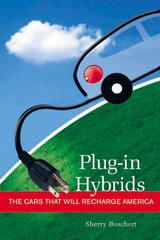 An ARB ZEV meeting is ordinarily a predictable affair. What began as a simple program requiring an ever increasing percentage of Zero Emission vehicles (read electric cars), has become mired in cumbersome bureaucratic complications. Acronymphia is not a sexual disease. (Look it up.) ZEV, SULEV, PZEV, ATPZEV, Gold, Silver, Bronze, Type I, II, III, and on and on. Tuesday's workshop was not so different. They are contemplating Silver+ and Type IV ZEVs. Uggh.
An ARB ZEV meeting is ordinarily a predictable affair. What began as a simple program requiring an ever increasing percentage of Zero Emission vehicles (read electric cars), has become mired in cumbersome bureaucratic complications. Acronymphia is not a sexual disease. (Look it up.) ZEV, SULEV, PZEV, ATPZEV, Gold, Silver, Bronze, Type I, II, III, and on and on. Tuesday's workshop was not so different. They are contemplating Silver+ and Type IV ZEVs. Uggh.Unfortunately, everyone recognizes that there is no coming down from this byzantine construction. Simplify is the mantra, but unachievable. Now, to add some further complication, everyone's got religion on plug-in hybrids. Many, including electric advocates, some enviros and ARB staff, (even some cars makers, it would seem) want to figure new ways to use the regs to bring plug-in hybrids to market quickly due to their near term benefits, commercialisability and pathways plug-ins offer to true ZEV. (Add more batteries as they become cheaper and more energy-dense, dump the engine; or, for the more fantasy-minded and those receiving compensation, add hydrogen fuel cell and drop the engine.)
But PHEVs are inherently the most complicated of all options. A plug-in hybrid, one could say, simply integrates electric drive into a car with internal combustion. However, there are innumerable ways to do it. Parallel, serial, blended, just for starters. Even the Prius and Civic Hybrid are quite different. ARB could spend a year in conversation with stakeholders to figure out regs and credits for new OEM plug-in hybrid cars.
A123 has an idea to cut through the difficulty of getting OEMs to make cars. Les Goldman, A123's lobbyist, presented the outline of a proposal that could be a win-win-win and get cars on the road quickly. They've been converting some cars back east, working out the kinks. Lately Goldman has been driving one around DC, meeting with policy makers and pushing for consumer incentives for hybrid conversions. (See my 7/12 post Plug-in Hybrid Bills in Congress Scare Auto Makers) With the addition of the A123 battery module, a Prius gets between 125 and 175 mpg. They are beginning to do crash testing, and will meet emission requirements, in pursuit of a fully legal, compliant vehicle. Throw the ZEV mandate into the mix, and maybe we've got something.
- Use the existing and growing base of hybrids, offer kits to authorized installers, and give ZEV credit to the original manufacturer in exchange for not killing the car's warranty.
- Hybrid drivers in California could finally actually get their hybrid converted.
- ARB could finally take some credit for cars with true ZEV miles once again on the road without depending on the ever-resistant, crusher-happy automakers.
- A123 gets to sell a lot of batteries without having to wait for the automakers to place orders of the magnitude they promise "once the batteries are ready."



1 comment:
Thanks, Marc, for pointing to this important development. To me (unable to attend, watching parts of the streaming video of the afternoon workshop), A123's presentation and very broad offer was by far the most stunning new idea to emerge at the workshop.
Les Goldman spoke extemporaneously and I haven't been able to get an official version of his remarks. Here's a paraphrase reconstructed from my notes, with some key amplifications of your points.
* By the middle of the next decade, there will be 10-15 million hybrids on the road. [Implication is that many will be non-PHEVs.]
* A123 has been in discussions with Volvo and BMW about use of its batteries.
* Modules fit in the spare tire well of hybrids and are installable in an hour by a certified mechanic.
* The modules will be fully NHTSA safety tested, will comply with CARB and EPA regulations, have a 10-year, 300,000-mile lifetime, based on Argonne testing showing a 7-10,000 cycle life [a PHEV needs about 4,000].
* The method is not optimized -- it simply makes more electricity available to the onboard computer. But Argonne tests show 150 MPG of gasoline use.
* Conversions of three-to-four million vehicles could move up the objectives of the Zero Emissions Vehicle program within a much tighter timeframe.
* A123 wants to discuss what combination of arrangements work, and offers backup and support.
* A123 proposes giving the resulting ZEV credits to the original manufacturers whose cars the batteries go into, thereby incentivizing them to participate instead of resisting and thereby educating the the public sooner.
* A123 aims to have the product in mass production by the first quarter of 2008.
* Meanwhile, having made no announcements, A123 is getting 500 unsolicited calls a week from people who want to be on a waiting ist. [My advice: email to info@hymotion.com, don't call!]
Felix Kramer, Founder, The California Cars Initiative (CalCars.org)
Post a Comment